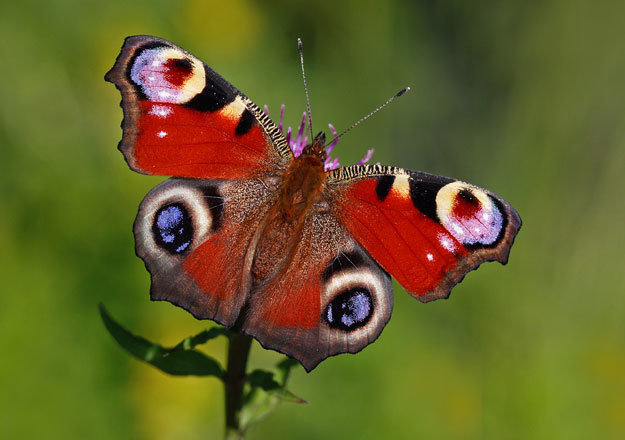
If you think you saw fewer butterflies than ever this British summer, you are probably correct: the Big Butterfly Count has recorded its lowest number of common species since records began.
Normally ubiquitous butterflies such as the gatekeeper, comma and small copper experienced their worst summers in the history of the count, which is run by Butterfly Conservation and began in 2010.
Scientists said the low number of butterflies is "a shock and a mystery" because this summer was warmer than average and much drier in England than the previous worst year for butterflies, 2012, which was unusually cold and wet.
"The drop in butterfly numbers this summer has been a shock," said Richard Fox of Butterfly Conservation. "When we have cold, wet summers, as in 2012, we expect butterfly populations to plummet, but that wasn't the case this year.
"The summer months were warmer than usual, yet most Big Butterfly Count participants saw fewer butterflies. Perhaps the very mild winter had a negative effect, or the cold spring, or perhaps the impacts of intensive farming and pesticides are really hitting these common species now."
The average number of butterflies seen by participants in the count was the lowest ever, with once-common garden butterflies such as the small tortoiseshell dropping by 47% compared to last year and the peacock falling by 42%. The peacock is a particular concern: it has now dropped from an average of 3.6 individuals per count in 2013 to just 0.5 per count in 2016, a six-fold decrease over three years.
One bright spot in the survey is the red admiral, which has continued to be widely seen through the autumn. Its numbers were up 70% compared to 2015, it had the largest year-on year-increase of any species and achieved its second highest abundance since the count began. The green-veined white also did well, rising by 58% and the count was topped for the first time by the large white, which increased by 2%, topping the charts only because other species fared so poorly.

More than 36,000 people spotted 390,000 butterflies during the three-week recording period for this year's Big Butterfly Count, which is sponsored by Waitrose and John Lewis and is the biggest annual citizen science insect survey in the world.
The count is the first indication that the summer of 2016 may be the worst year on record for butterflies. But the year could turn out to be slightly better than expected when detailed data is collated on all 59 species of British butterfly in the UK Butterfly Monitoring Scheme, which has scientifically counted butterflies for 40 years.



Reader Comments
to our Newsletter